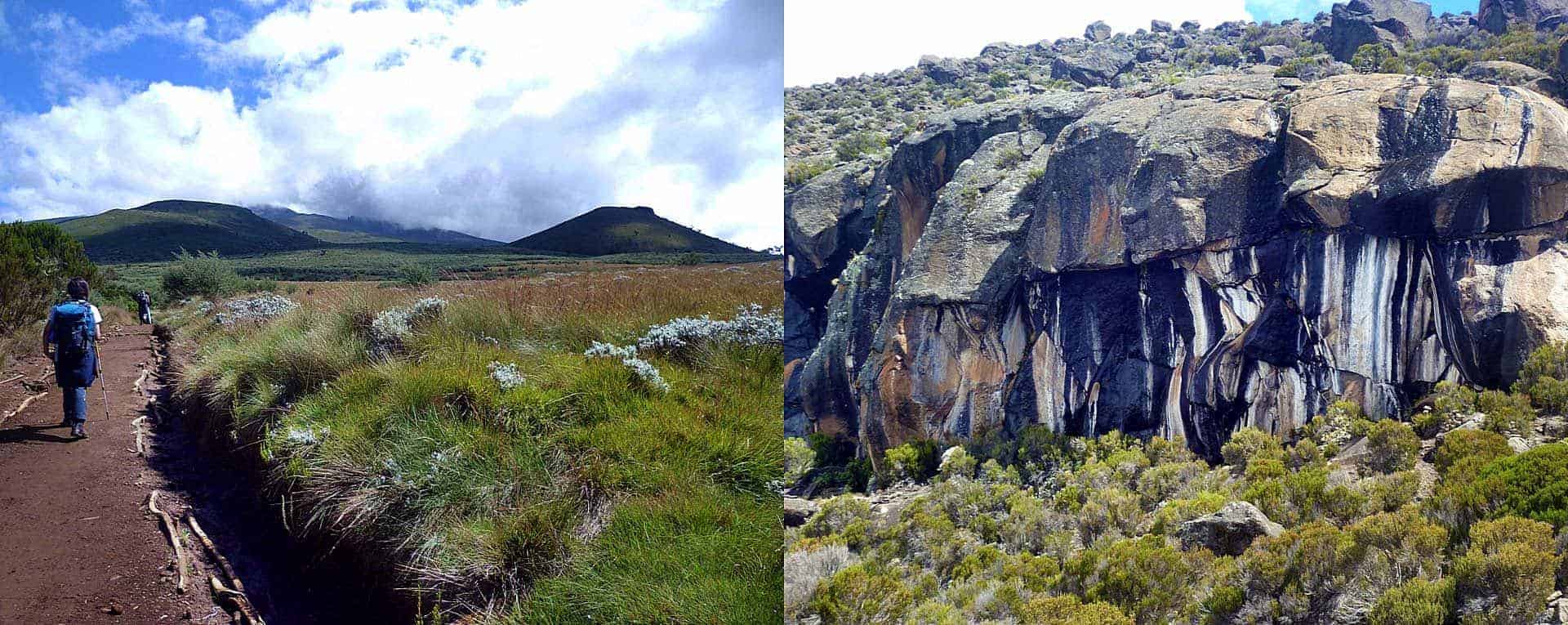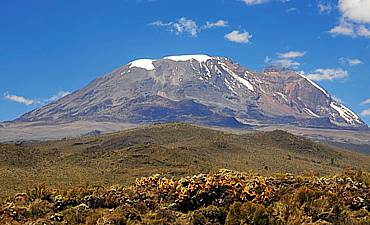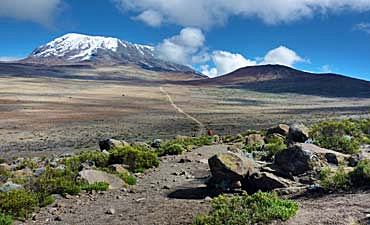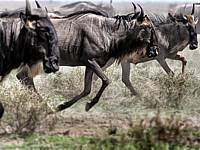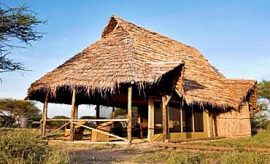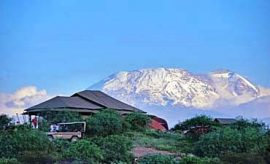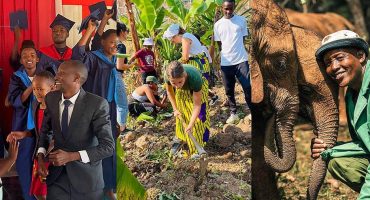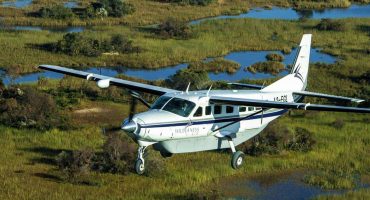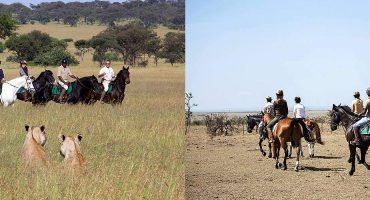MOUNT KILIMANJARO HISTORY, TRIBES AND GEOLOGY
1. History Of Mount Kilimanjaro
Ice, too hard and brilliant to be melted by the sun, thawed against sun-warmed and thermally heated rock, ran down black basaltic lava rocks in white zebra stripes of ash-derived salts. Life-giving streams fertilized and watered lower mountain slopes, providing an ideal environment for early man to develop from nomadic hunter-gatherer to settled farmer, building villages and developing a cohesive society. Apart from a few stone bowls, you will find no traces of these early settlements on trek tours of Kilimanjaro.The mountain was a landmark for Arab and Chinese traders. The earliest historical references to the mountain (described as a snow island in the sky), appear in the writings of Ptolemy, a Graeco-Roman polymath, or a man of many talents -- historian, writer, astronomer, geographer and mathematician who lived in the first century AD. Chinese scholars do not refer to it until around seven centuries ago.
In 1849, missionary Johann Rebmann, published an account that was not believed. Kilimanjaro became part of a German Protectorate in 1885. Hans Meyer was the first European to climb Mount Kilimanjaro to reach the summit of Kibo in October of 1889. At this point, it was actually described as “The highest mountain in Germany”! The German colonial government made Mount Kilimanjaro a game reserve together with its surrounding forests until it was allocated to the British as a Protectorate under the League of Nations until Tanzanian Independence in 1961.
In 1973, Kilimanjaro National Park included 1668 square kilometers of the mountain above 800 meters high, within a forest reserve above the foothills. In 1987, this was declared a United Nations World Heritage Site and expanded in 2005 to include the entire tropical forest where certain species found on a Mt. Kilimanjaro climbing fieldtrip occur nowhere else on earth. The lower slopes are still farmed by the indigenous Chagga people.
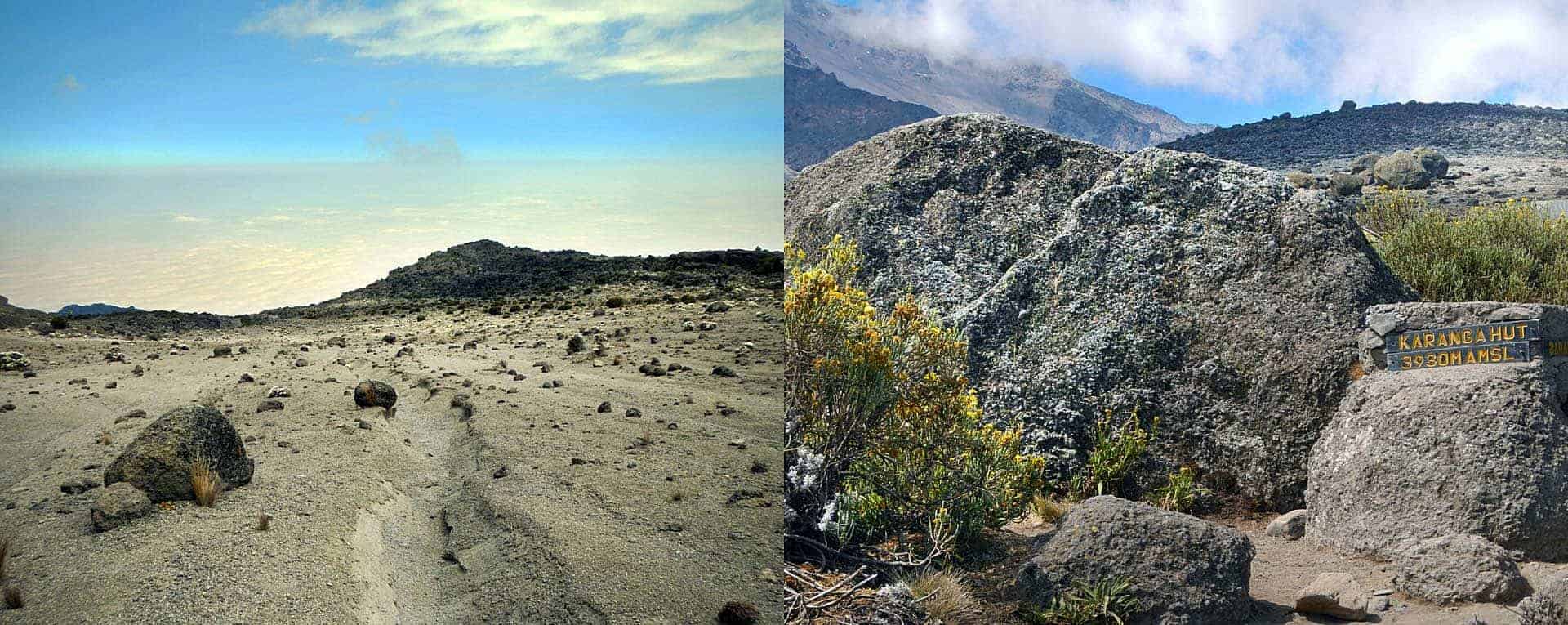
2. The Tribal People of Kilimanjaro
Since 400 years ago, the Wachagga people settled on Kilimanjaro, displacing or absorbing earlier tribes. Amongst these were said to be the aboriginal Wakonyingo: Bantu dwarf pygmies of mythical stature, credited variously with tails, large heads, magical powers and the ability to live close to heaven at the top of mountains. The Umbo tribe, driven out themselves from Usambara Mountains, may have been responsible for the disappearance of the Wakonyingo.The Wangassa claimed to have lived forever on the mountain and to be separate from the Maasai people whom they resembled at that time. After a long history of war and treachery, the various tribes and clans became united under one chief as the Chagga people. The Chagga now form one of Tanzania’s largest, richest, best refined and most powerful ethnic groups, possibly because of the fertility of their homelands combined with their contact with early German colonialists and missionaries whose travel in Africa provided the Chagga with education and opportunities to embrace the Western culture.
However, this destroyed much of the Chagga way of life, which included veneration of the mountain god, Ruwa, and their own ancestors. Medicine men practiced animal and even human sacrifice with elaborate rituals for purifying people who had been the target of curses or malicious magic. They practiced circumcision, puberty rituals, elaborate levels of burial rites depending on the status of the deceased, and brides were coached to put on appropriate weight before carrying them to their husbands.
The staple crops were bananas and sweet potatoes, given to them by Ruwa. A banana grove is a sacred place and the family burial ground. Their homes, simple beehive huts, can still be seen today on a Kilimanjaro tour in East Africa. Their wealth is now based on banana and coffee plantations, but they no longer accept barter payment in beads and cloth.
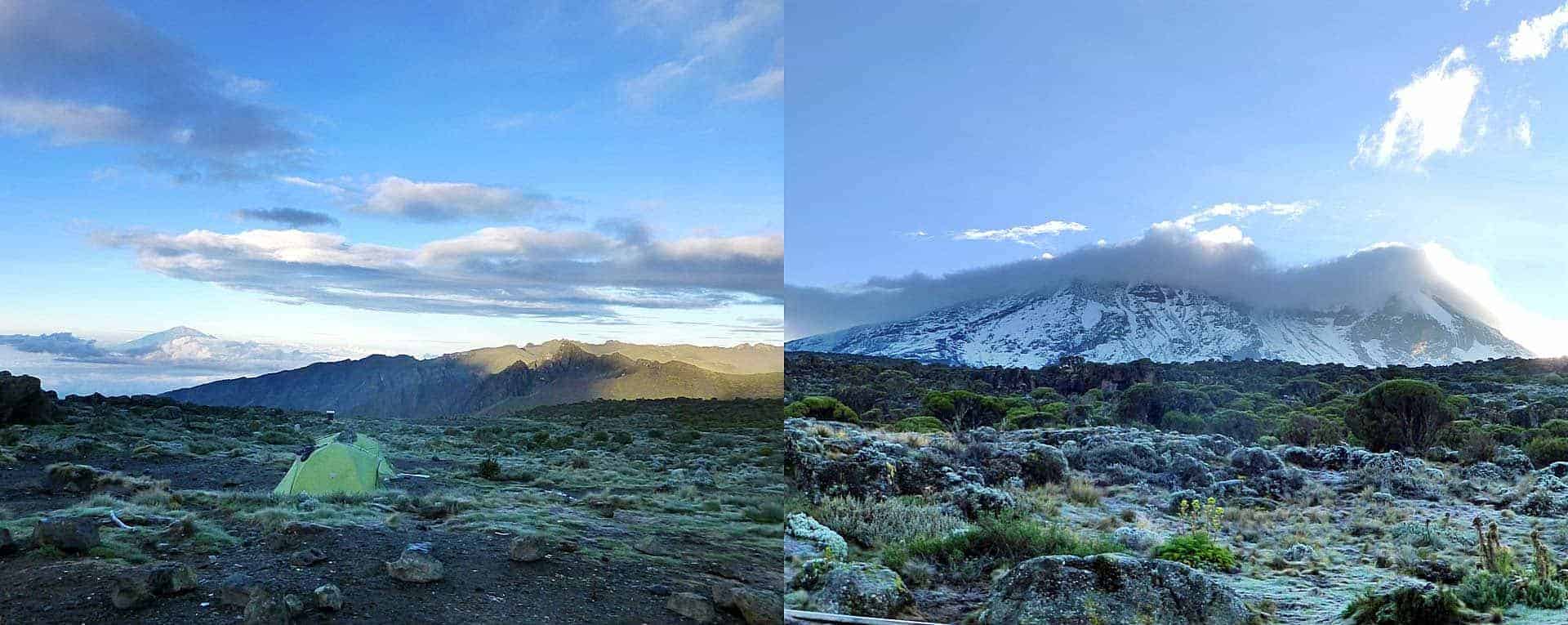
3. Geology Of Kilimanjaro
Mount Kilimanjaro, the tallest mountain in Africa, is a unique Tanzanian highland vacation destination: a stand-alone pinnacle which creates its own climate in zones of distinct character, from fluted glacial columns and cathedrals of ice on the summit, through alpine desert, heath and moorland, to rich, lush tropical forests and fertile farmland on gentle slopes above vast grass steppes. It is the perfect place for a climbing safari-quest in Africa for the common man.The Shining Mountain, to give its deciphered name in Kiswahili, was created in a cataclysmic dance of fire and ice, starting with the formation of the Great African Rift Valley in the Pleistocene age some 35 million years ago. The birth of Kilimanjaro started three-quarters of a million years ago. Three cones erupted. Shira was formed first, 500,000 years ago, followed by Mawenzi, both now extinct, and collapsed caldera. Supported on their foundation, Kibo continued to rise to become the famous ice-capped peak.
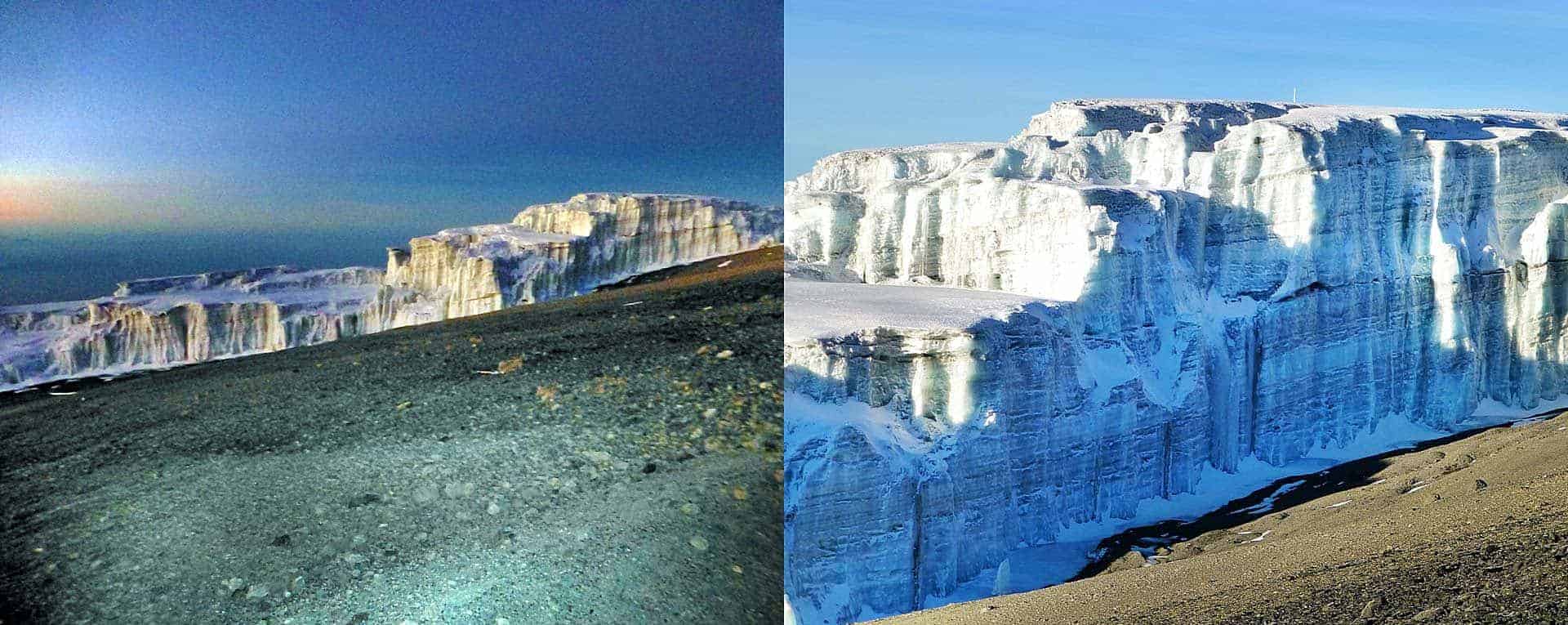
This strato-volcano formed from layers of ash and lava continued to evolve over hundreds of thousands of years as the volcano reared and slumped while ice retreated and advanced. Its last major eruption was over 150,000 years ago at the bare minimum, but you can see sulphur-vapour fumaroles and numbers of small, dormant mini or parasitic volcanic cones on trekking tours on Mt. Kilimanjaro. The last upsurge, 200 years ago, left the spectacular Ash Pit in the Reusch Crater.
Ancient glaciers on Kilimanjaro provide an ice-core record of climate change over almost 12,000 years, including periods of extreme drought and fluctuating levels of water and ice. Once again, the ice is in retreat. Within the next decades, people climbing Mount Kilimanjaro may find the summit as bare and black as it was for 20,000 years before the Holocene Period of the last 10,000 years. Soon, the Shining Mountain may be no more than a memory of climb holidays in Africa. Take the challenge on today with planning your trek with Uhuru Trails by AfricanMecca.
Select Our Highly Recommended & Unique Designed Mount Kilimanjaro Climbs & Safaris That You Want To Tour Visit & Experience
Read More +
KILIMANJARO TREK GUIDE- HOME
Uhuru Trails by AfricanMecca is a fresh team name for a long-established partnership between AfricanMecca Safaris and one of our most experienced, dependable and registered team outfitters on Kilimanjaro to provide discerning climbing experiences.
Read More +
KILIMANJARO CLIMB INTRODUCTION
AfricanMecca believes Kilimanjaro is a mountain with attitude. Towering enigmatically like an ethereal island in the sky wreathed in mists, at 5895 meters, it is the highest mountain in Africa and the highest stand-alone mountain in the world.
Read More +
KILIMANJARO CLIMB PRICES
Here you will find prices for various recommended and acclimitized routes for Kilimanjaro including Lemosho, Machame, Rongai, Shira, Umbwe and Marangu. We recommend you customize your private climb based on your preference and group size.
Read More +
TOP 10 REASONS TO CLIMB WITH US
We have 10 great reasons why you should climb with us. The first is a pioneering approach to guiding standards on Mount Kilimanjaro. Uniquely, we offer every trekker his or her own personal support guide (1 GUIDE : 1 CLIMBER RATIO).
Read More +
WHICH KILI ROUTE TO CHOOSE?
There are six approved routes for a Kilimanjaro climb with Uhuru Trails By AfricanMecca, each offering different advantages and drawbacks. Regardless of which route you choose, you need not be a rock climber, superlatively fit or supremely well-equipped.
Read More +
OUR MOUNTAIN FAMILY TEAM
We trust our clients to the care of some of the best experienced mountain guides in the Tanzanian travel industry. Our guide leaders have 100 hundreds of climb experiences in between 10 to 20 years' of the best way to succeed in climbing Kilimanjaro.
Read More +
BEST TIME TO CLIMB KILIMANJARO
One of the best times for a Tanzanian trek vacation on Mount Kilimanjaro is in the warm months of January and February when clear skies afford excellent views of superb scenery, especially from the upper slopes; though, expect some snowfall during this period.
Read More +
UHURU SUMIMIT SUCCESS GUIDE
Trekking to the roof of Africa can be a glorious, triumphant achievement that can color the rest of your life with self-confidence and pride. Or it can be an ordeal or even an abject failure. You need to know exactly what you are letting yourself in for.
Read More +
KILIMANJARO SAFETY CLIMB GUIDE
It must be clearly understood that Mount Kilimanjaro is a dangerous environment where climbers are risking their lives. One person in every thousand (0.1%) will die on the mountain and more than half of these deaths could be preventable.
Read More +
SAFETY EQUIPMENT GUIDE
Kilimanjaro kills those climbers who go beyond their sensible limits. We have an enviable safety record because its leaders do not waste time on technological fixes on high altitude, but get sick and injured trekkers off the mountain without delay.
Read More +
KILI ALTITUDE SICKNESS GUIDE
The general impression is that a climbing tour of Kilimanjaro is an easy mountaineering option, since the 5895 meter mountain has been successfully climbed by hardy children and by octogenarians. It is not. It is a perilous undertaking.
Read More +
FAQ ON KILIMANJARO
Review Frequently Asked Questions for our Kilimanjaro treks. Questions range from custom private climb options, charity climbs, Crater Camp add experience, costs, tipping, a day on a climb, packing list, reducing ecological footprint to combining safari.
Read More +
FIVE ZONES OF KILIMANJARO
Review the 5 geographical, flora and fauna zones of Mount Kilimanjaro. The zones include the lower countryside slopes, montane forests, heathlands and moorlands, the towering alpine deserts and the arctic ice cap summit of the shinning mountain.
Read More +
KILI GEOLOGY, HISTORY & TRIBES
Mount Kilimanjaro, the tallest mountain in Africa, is a unique Tanzanian highland vacation destination: a stand-alone pinnacle which creates its own climate in zones of distinct character, from fluted glacial columns and cathedrals of ice on the summit.
Read More +
GUIDE ON KILIMANJARO PARK
Kilimanjaro, the shining mountain, floats in a wreath of cloud above the vast South Amboseli plains (a.ka the Western Kilimanjaro wilderness), offering an amazingly diverse series of fauna and habitats. It is a superlative destination for trekking.
AFRICANMECCA REVIEWS
What are our Customers saying about us? READ MORE REVIEWS![]()
Loretta and I had a great time on our honeymoon. Simiton, your safari guide in Tanzania was awesome! He was very professional, very accommodating and very knowledgeable. We are already talking about our next trip to Africa!
Loretta and Danny Haag - California, United States
First off, we had the most amazing time ever and wanted to thank you very much. Tanzania proved without a doubt to meet all of our expectations. Every detail was thought of on our trip by AfricanMecca and were are all flawless.
Marcy Burton & Ryan Kerr - Ontario, Canada
We have returned from our African adventure and would like to thank you very much for your part in making this such a wonderful experience. We were lucky enough to time the Great Migration from the Serengeti, which was amazing.
Denise Paterson - Belmont, Australia
Jambo Raza, It was a wonderful experience in Tanzania. Rogers, our guide was superb; knowledgeable, helpful and very friendly. We were treated very well by all your ground team and everything ran smoothly. I enjoyed it all.
Alan Winner, Minnesota, United States
AfricanMecca's professionalism and care understands that what distinguishes Africa is its authenticity, the land, people and wildlife who do not share our world of fashion and fanfare that distinguish so many travel companies today.
Cyril Christo & Marie Wilkinson, Conservation Photographers, Authors & Wildlife Documentary Producers - USA
AfricanMecca Safaris created a remarkable honeymoon tailored to our interests and desires. The quality of service and delivery of experience was unsurpassed. I highly recommend AfricanMecca Safaris to honeymooners, families, or any traveler.
Noorin & Jason Nelson - Maryland, United States
I booked my safari holiday through AfricanMecca. They were the most helpful company I have ever dealt with and I work within the travel industry. I had the most amazing time. The holiday went as clockwork with no hitches anywhere.
Shelley Roberts - Hemel Hempstead, United Kingdom
EAST AFRICA SAFARI BOOKING TRIP IDEA FOR MOUNT KILIMANJARO IN NORTHERN TANZANIA
When visiting Mount Kilimanjaro National Park, we recommend combining it with your Northern Tanzania safari to Tarangire, Lake Manyara, Ngorongoro Crater and Serengeti (wildebeest migration). End your trip with a Swahili cultural tour and beach holiday in Zanzibar.
You may optionally extend out to offbeat parks in Southern and Western Tanzania such as Nyerere (Selous), Ruaha or Katavi ending with a chimpanzee trekking safari at Gombe or Mahale by the relaxing Lake Tanganyika.
MOUNT KILIMANJARO PARK SAFARI & TOUR PLANNING DETAILS
Kickstart Your Safari Planning
ARE YOU PLANNING TO BOOK AN AFRICAN SAFARI TO MOUNT KILIMANJARO IN TANZANIA?
Do You Need Knowledgeable, Experienced & Specialist Guidance For Your Travels In Mount Kilimanjaro ? Let Us Help Plan Your Trip Itinerary Correctly
CONTACT AN AFRICA TRAVEL EXPERT ON MOUNT KILIMANJARO NATIONAL PARKMOUNT KILIMANJARO CAMPS & LODGES
Scroll and view more Mount Kilimanjaro safari accommodations in Tanzania
EXPLORE MORE ON MOUNT KILIMANJARO NATIONAL PARK IN TANZANIA
HAVE YOU VISITED MOUNT KILIMANJARO FOR AN AFRICA SAFARI IN TANZANIA?
Write A Travel Or Tourist Trip Review To Share Your Experiences
WRITE MOUNT KILIMANJARO REVIEWAMS BLOG
VIEW ALL -- 24 December 2024 by AfricanMecca Safaris, in Blog For AfricanMecca Safaris,Safari Planning Blog Posts - AfricanMecca Safaris
What AfricanMecca Accomplished In 2024
What AfricanMecca Accomplished In 2024 Published By AfricanMecca Safaris | Blog ...READ MORE + - 26 October 2017 by AfricanMecca Safaris, in Blog For AfricanMecca Safaris,Safari Planning Blog Posts - AfricanMecca Safaris
Baggage Guidance, Flight Shuttle Service & Restrictions On Flying Safaris In Africa
Baggage Guidance, Flight Shuttle Service & Restrictions On Flying Safaris In...READ MORE + - 07 June 2017 by AfricanMecca Safaris, in Blog For AfricanMecca Safaris,Latest Kenya Blog Posts From AfricanMecca Safaris,Safari Planning Blog Posts - AfricanMecca Safaris
Masai Mara Horseback Riding Safari In Kenya With AfricanMecca
Masai Mara Horseback Riding Safari In Kenya Published By AfricanMecca Safaris | ...READ MORE +

